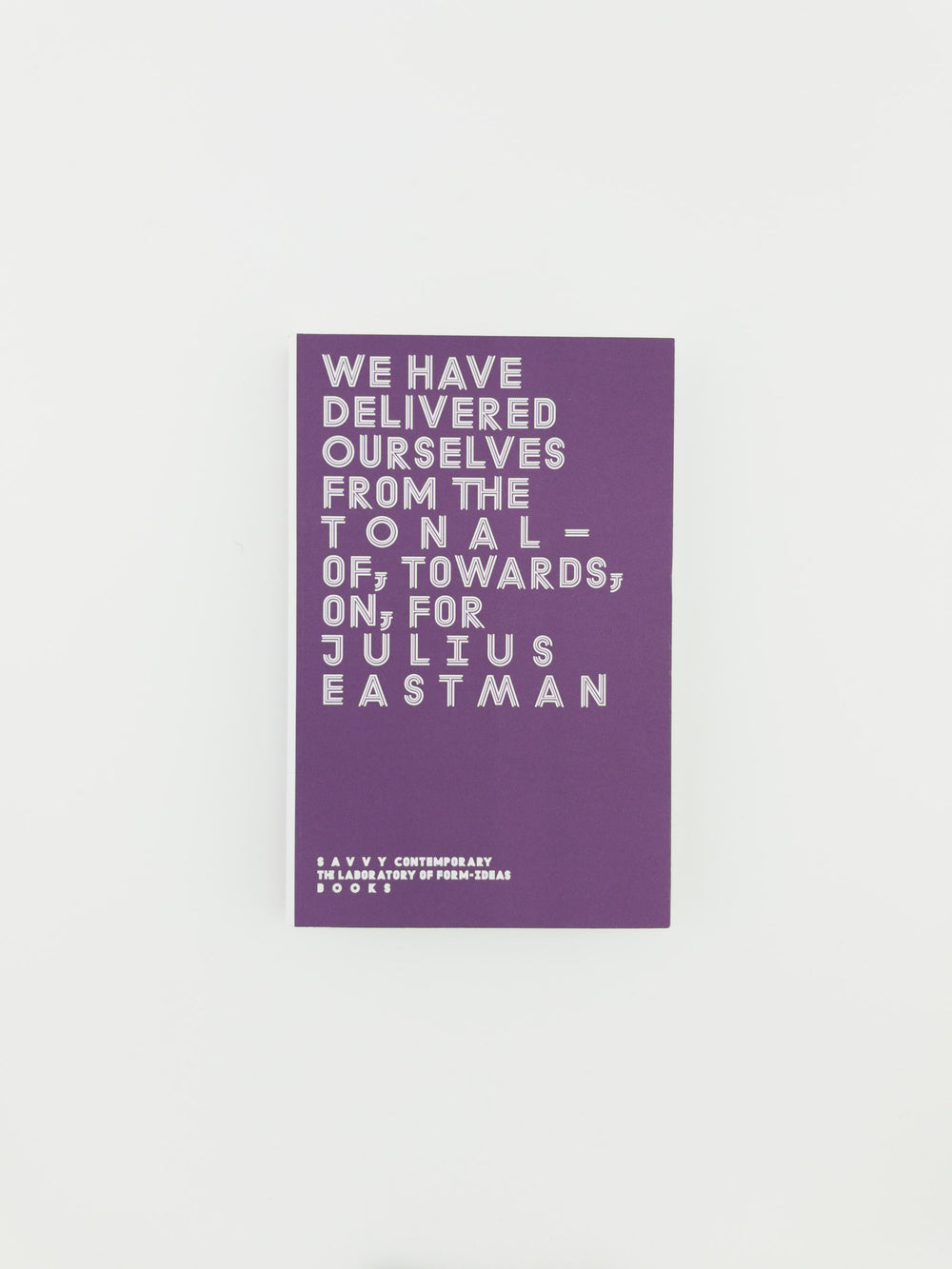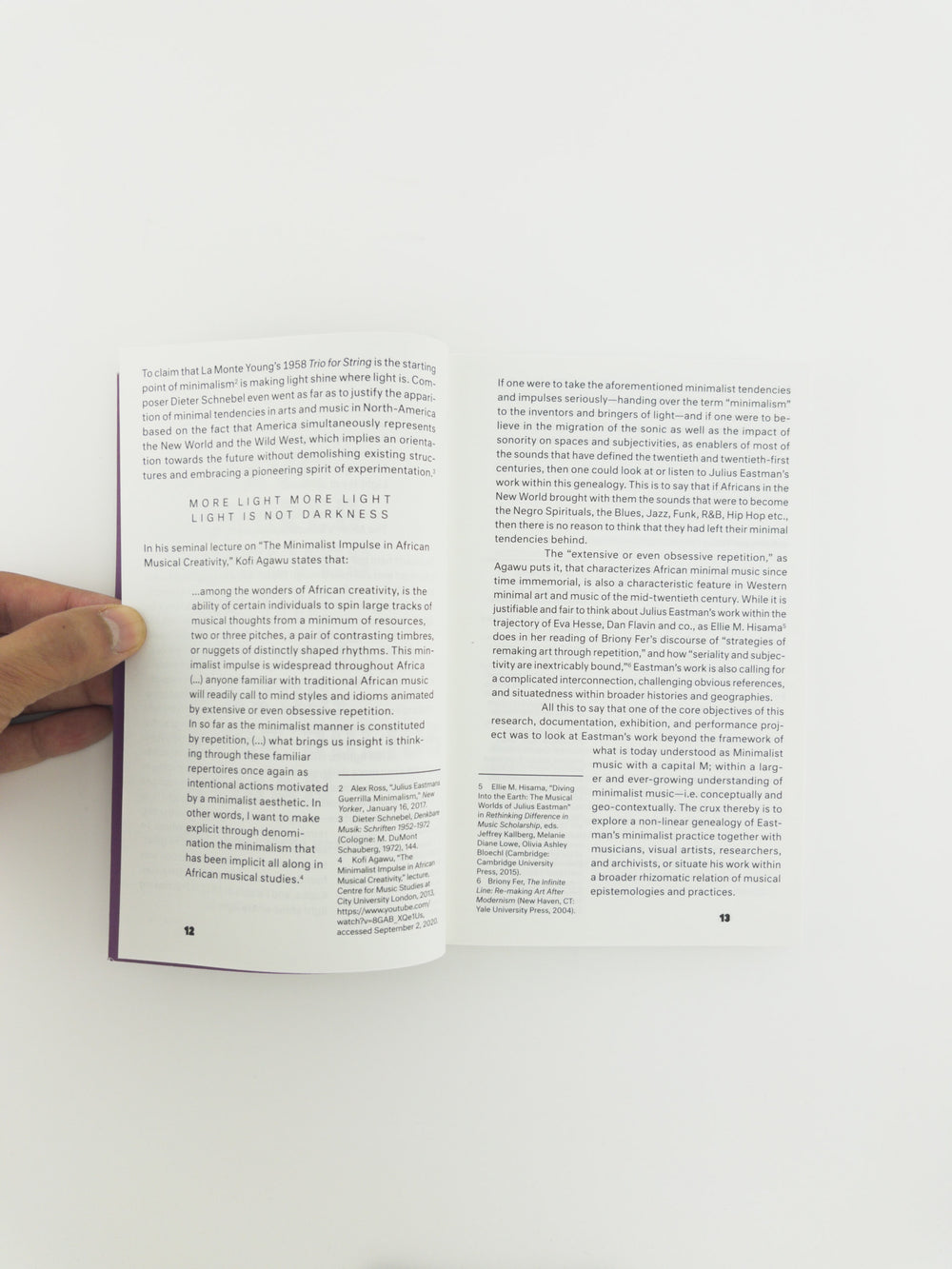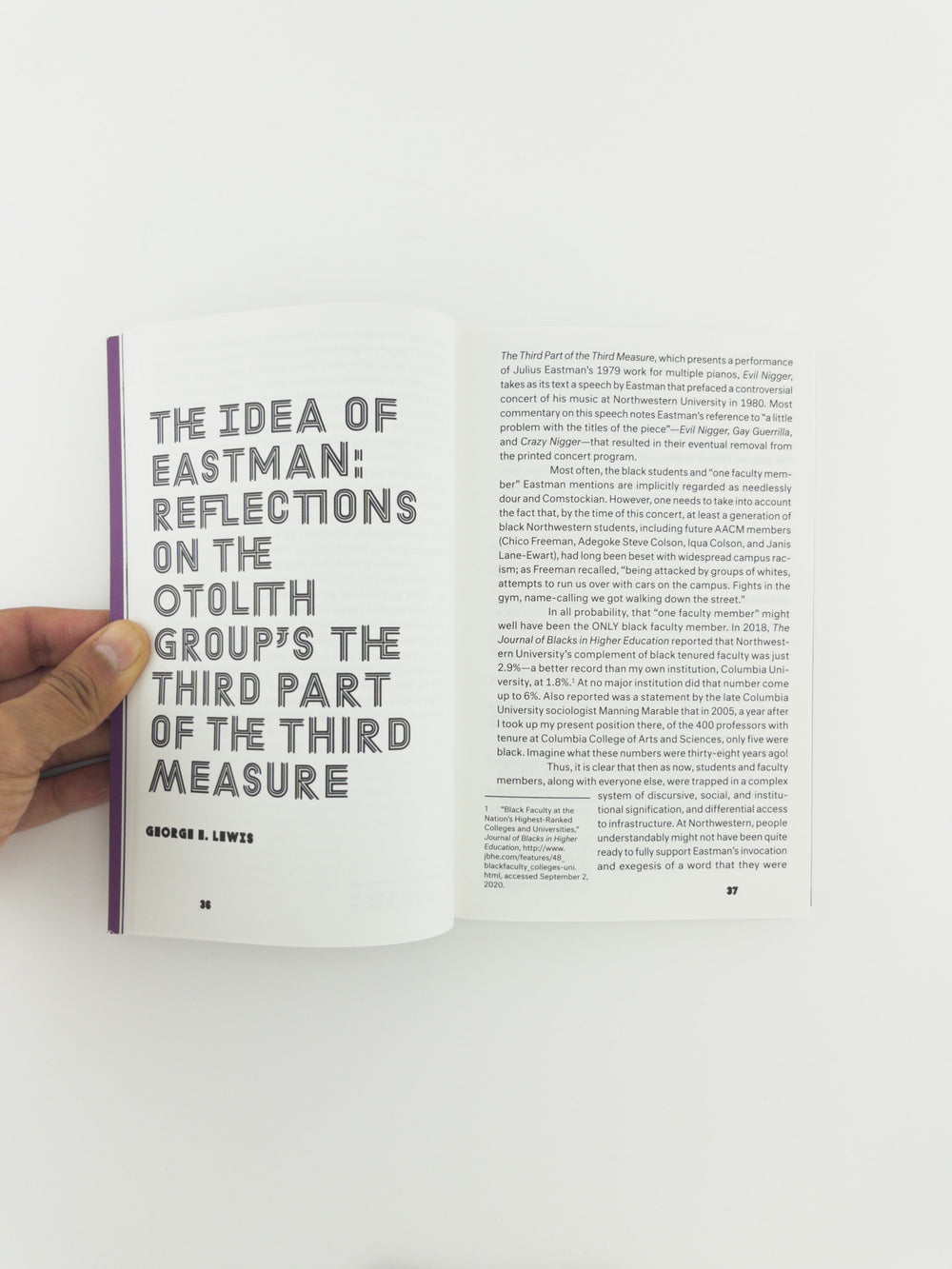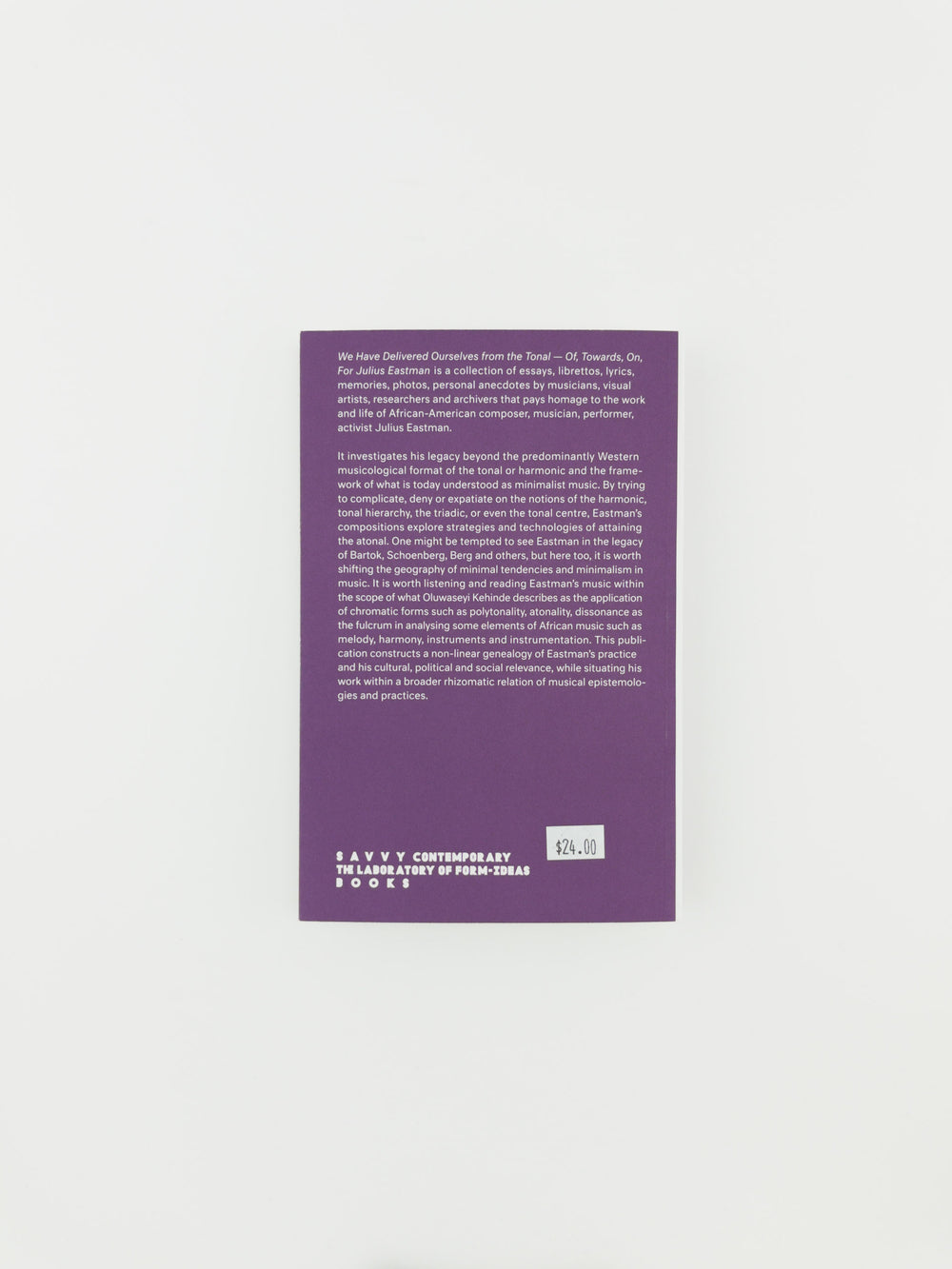We Have Delivered Ourselves From the Tonal —— Of, Towards, On, For Julius Eastman
Archive Books
Archive Books







1/7
2/7
3/7
4/7
5/7
6/7
7/7
We Have Delivered Ourselves From the Tonal —— Of, Towards, On, For Julius Eastman
Archive Books
Archive Books
We Have Delivered Ourselves from the Tonal — Of, Towards, On, For Julius Eastman is a collection of essays, librettos, lyrics, memories, photos, personal anecdotes by musicians, visual artists, researchers and archivers that pays homage to the work and life of African-American composer, musician, performer, activist Julius Eastman.
It investigates his legacy beyond the predominantly Western musicological format of the tonal or harmonic and the framework of what is today understood as minimalist music. By trying to complicate, deny or expatiate on the notions of the harmonic, tonal hierarchy, the triadic, or even the tonal centre, Eastman’s compositions explore strategies and technologies of attaining the atonal. One might be tempted to see Eastman in the legacy of Bartok, Schoenberg, Berg and others, but here too, it is worth shifting the geography of minimal tendencies and minimalism in music. It is worth listening and reading Eastman’s music within the scope of what Oluwaseyi Kehinde describes as the application of chromatic forms such as polytonality, atonality, dissonance as the fulcrum in analysing some elements of African music such as melody, harmony, instruments and instrumentation. This publication constructs a non-linear genealogy of Eastman’s practice and his cultural, political and social relevance, while situating his work within a broader rhizomatic relation of musical epistemologies and practices.
Editor(s): Federica Bueti, Antonia Alampi, Bonaventure Soh Bejeng Ndikung
Year: 2021
Pages: 260
Cover: Softcover
ISBN: 978–3–948212–11–7
Language: English
It investigates his legacy beyond the predominantly Western musicological format of the tonal or harmonic and the framework of what is today understood as minimalist music. By trying to complicate, deny or expatiate on the notions of the harmonic, tonal hierarchy, the triadic, or even the tonal centre, Eastman’s compositions explore strategies and technologies of attaining the atonal. One might be tempted to see Eastman in the legacy of Bartok, Schoenberg, Berg and others, but here too, it is worth shifting the geography of minimal tendencies and minimalism in music. It is worth listening and reading Eastman’s music within the scope of what Oluwaseyi Kehinde describes as the application of chromatic forms such as polytonality, atonality, dissonance as the fulcrum in analysing some elements of African music such as melody, harmony, instruments and instrumentation. This publication constructs a non-linear genealogy of Eastman’s practice and his cultural, political and social relevance, while situating his work within a broader rhizomatic relation of musical epistemologies and practices.
Editor(s): Federica Bueti, Antonia Alampi, Bonaventure Soh Bejeng Ndikung
Year: 2021
Pages: 260
Cover: Softcover
ISBN: 978–3–948212–11–7
Language: English